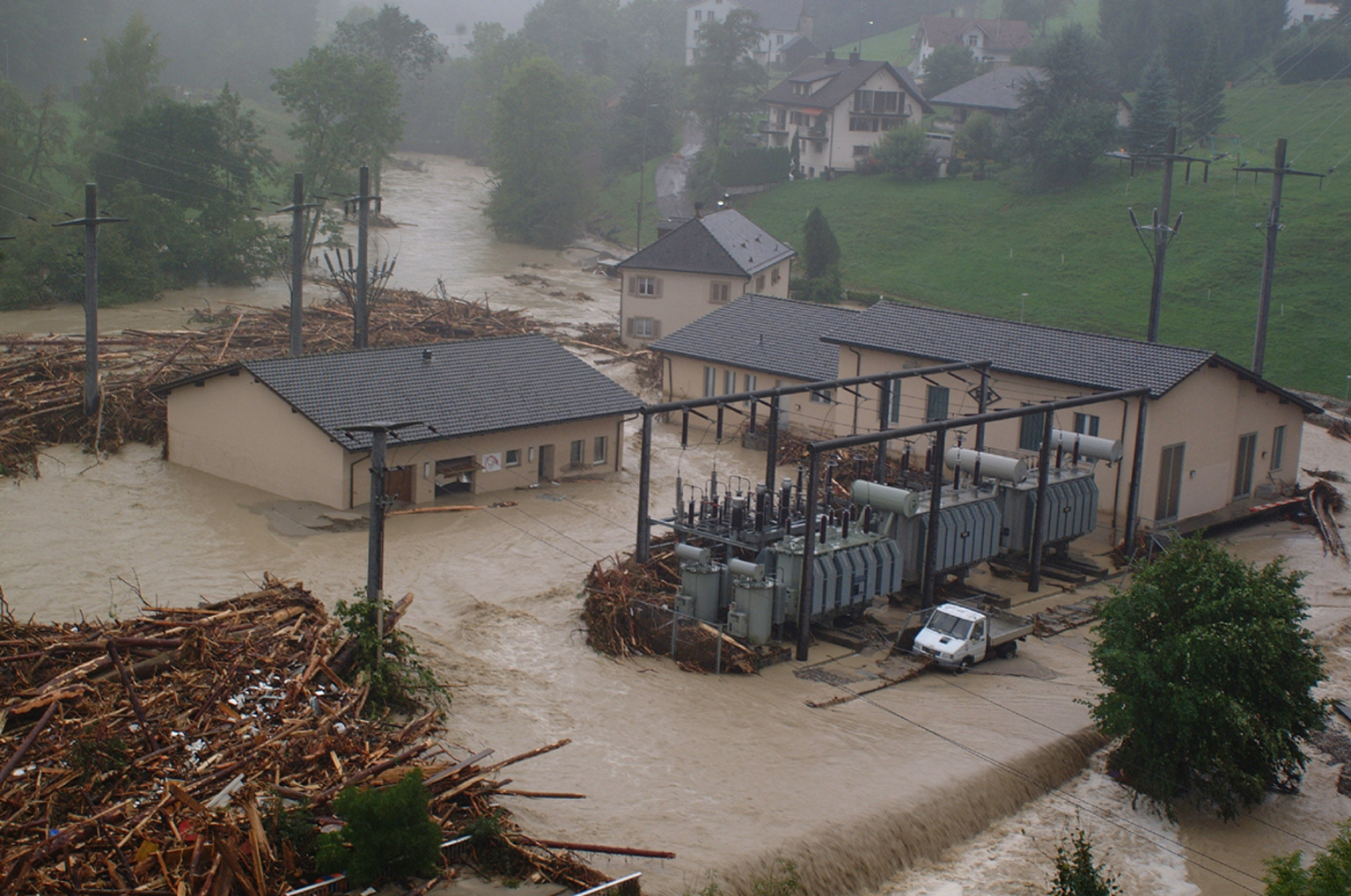Natural hazards: Federal government to complete alert chain
The federal government warns and protects the population against natural hazards. In view of climate change and new risks, it is strengthening this protection through additional measures.

Within the framework of the project Optimization of Warning and Alerting for Natural Hazards (Owarna), the federal government and the cantons are continuously improving their cooperation as well as forecasts and warnings for natural events. The aim is to prevent victims and damage as far as possible. At the federal level, the Steering Committee Intervention Natural Hazards (Lainat) coordinates the activities of the various federal agencies. At its meeting on April 18, 2018, the Federal Council took note of the Lainat's periodic report on the status of Owarna and allocated funds to implement the measures contained therein, it was announced.
Expand alarming
The second Owarna follow-up report shows that Switzerland now has a well-functioning warning and alert chain in the event of imminent natural disasters, thanks to the measures implemented and the commitment of the authorities and specialist agencies. In order to maintain the current level, however, further efforts are necessary: For example, this chain must be completed and adapted to keep pace with the new means and technologies of communication and the increased demands regarding the availability and accuracy of information on natural hazards.
Extreme events: coordinated monitoring
It is becoming apparent that events such as storms, floods or mass movements will become more frequent and larger or more intense in the coming years. The federal government intends to counter such extreme events with nationally coordinated monitoring and the expansion of forecasting and warning activities, and to include mass movements in the warning system for the first time. In addition, the meteorological warning system will be further improved in order to issue warnings with greater local precision and to be able to focus on possible effects in the future. The Federal Council has allocated a total of 17.3 million Swiss francs for investment and operating costs for these measures for the period from 2019 to 2023 and has approved 9.5 posts.
Federal natural hazard agencies and their responsibilities
The Lainat brings together the following federal natural hazards agencies:
- Federal Office for Civil Protection (Babs): The Babs operates the National Alarm Center, is responsible for the Federal Civil Protection Staff and designs, develops and operates technical systems for warning, alerting and disseminating behavioral instructions to the population and the media. www.babs.admin.ch
The Federal Office for the Environment (Bafu): Protection against natural hazards in the area of hydrological forecasts, warning the population of floods, associated mass movements, and forest fire hazards. www.bafu.admin.ch
Federal Office of Meteorology and Climatology MeteoSwiss: Monitors weather patterns, analyzes weather and climate data, produces weather forecasts, and warns authorities and the public of thunderstorms, wind, rain, heat, frost, snowfall, and slippery roads. www.meteoschweiz.admin.ch
The Swiss Seismological Service (SED) at ETH Zurich: Monitors earthquake activity in Switzerland and in neighboring countries. Assesses earthquake risk and provides information on the location, magnitude and possible effects of earthquakes. www.seismo.ethz.ch
WSL Institute for Snow and Avalanche Research SLF: Assesses avalanche danger and issues daily avalanche bulletin in winter. Supports Bafu with information on snow water resources for flood warnings. www.slf.ch
Source: Confederation
Compare also article "No uniform severe weather warnings"









